Tall Tower Tussles
Florida’s new law promotes affordable housing. Local leaders hate it.
South Florida’s got an affordable housing shortage. And why wouldn’t it?
An unprecedented migration of wealth and business has flowed into the state, sending demand for homes and rentals soaring — as well as prices. Developers are exuberant, building ever more lavish and pricey units to capture this new, well-heeled consumer.
So how do you entice construction of housing that’s reasonably priced for those who are getting priced out?
With a bit of leverage and a whole lot of incentives. Florida last year approved the Live Local Act, which promised to ease the burden of two things builders hate: taxes and zoning restrictions.
Developers are now allowed to pitch ultra-tall projects that bypass local limits on building heights— so long as they designate 40% of their project’s units as “affordable” to people of certain income thresholds.
That’s unleashed a flood of proposals for income-restricted, or “workforce,” housing. But it’s also drawn the ire of local officials who aren’t pleased with the unusually tall tower plans cropping up in their towns, which state law declares must be approved.
Now, legislators are looking to change the law, less than one year since it was enacted, and before almost any proposed project has gotten under way.
This week, we look look at the highs and lows of Florida’s attempt to build more reasonably priced rental housing.
A Plot Twist! (And a Tax Break)
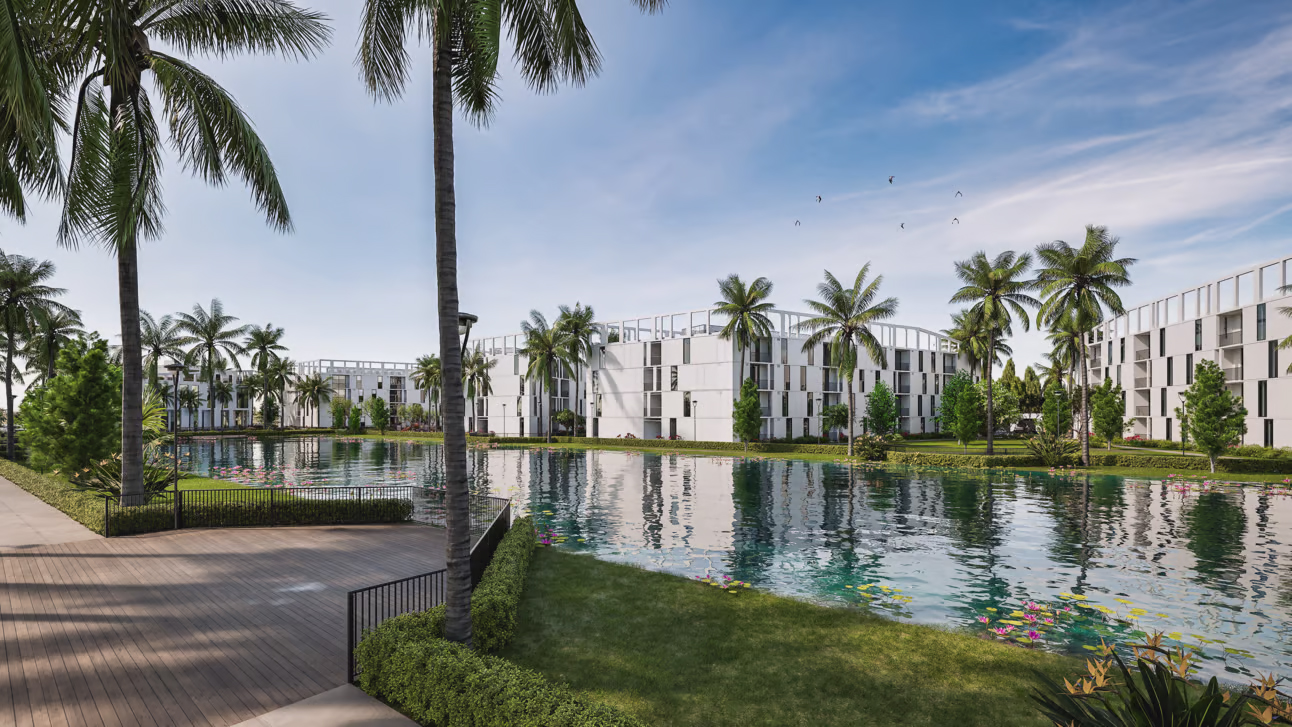
Laguna Gardens (Photo: Jo Palma and Partners)
Asi Cymbal didn’t intend to build workforce housing when he broke ground on a luxury apartment community in Miami Gardens.
Halfway through construction, things changed.
The Live Local Act was signed into law while his firm, Cymbal DLT, was underway on the 341-unit rental development, called Laguna Gardens. And that new law dangled a perk that was hard to ignore: a 70% property tax reduction for any portion of the project designated as “affordable,” Cymbal said.
So Cymbal DLT went all-in — and declared every single apartment as such, with plans to lease them at below-market rates.
“Nothing’s changed with the project other than the rents,” Cymbal said of the low-rise development. “And that decision was made because of the financial incentive that was provided.”
Rents at Laguna Gardens—where amenities include a lap pool, a meditation garden and a “metaverse room” — now start at $2,000 for a one-bedroom, instead of $2,300 as originally planned, he said. That makes them accessible to tenants who earn up to 120% of the area’s median income — or $86,760 for a single-person household, according to state guidelines.
”Attainable luxury housing” is what Cymbal now calls it: “That’s housing that our hometown heroes can afford —our local police officers, teachers and nurses,” he said.
Cymbal is looking to retroactively apply the Live Local law to his other projects, including a rental community in Dania Beach that’s been open for over a year. He’s considering placing rent restrictions on 71 units there, the minimum required by law, as a way of realizing property tax deductions.
And he’s exploring doing the same within the $1.5 billion waterfront hotel and restaurant district he’s planning in Fort Lauderdale. There, the 71 rent- restricted units could be nestled among luxury condos in a neighborhood that will also offer a yacht valet, he said.
For now, Laguna Gardens is among the first projects in Florida to welcome middle-income tenants under the new law. Move-ins start in March.
“We’re certainly the first to implement it, in fact,” Cymbal said.
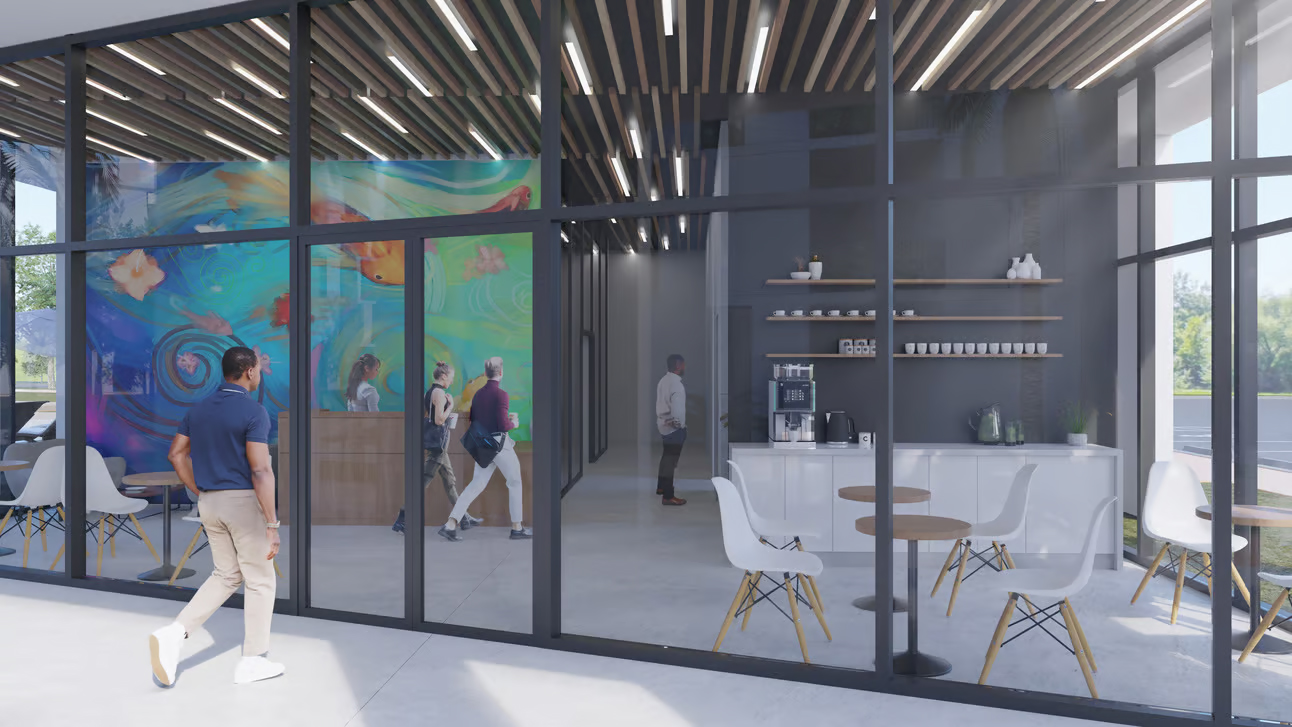
Clubhouse at Laguna Gardens (Photo: Jo Palma and Partners)
Brawls, Barbs and Canadian Bacon
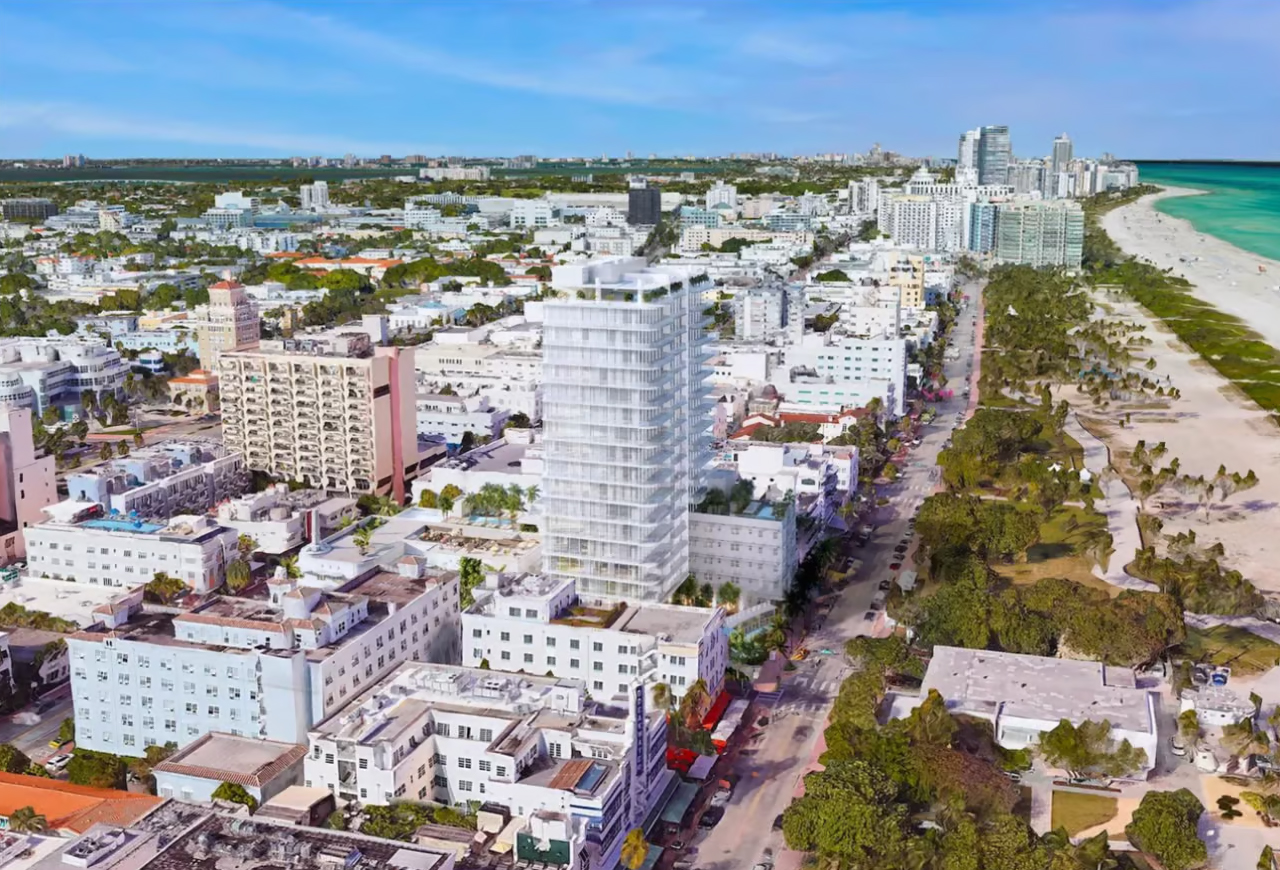
Jesta Group proposal for 18-story tower in Miami Beach
Applying the Live Local Act hasn’t been easy for most anyone else. Developers across the state have filed plans for tall towers, with affordable units, and they’re getting a hefty serving of backlash in return.
“I have not seen a single project being approved under Live Local in the state of Florida,” land use attorney Keith Poliakoff said in an interview this week. “I have only seen pushback, by every municipality across the board, to prohibit its implementation.”
Here’s a rundown of that resistance:
🥊 Miami Beach: In a plan derided by the former mayor as “the worst idea ever,” Montreal developer Jesta Group suggested a 30-story building on South Beach’s iconic Ocean Drive. The structure would tower over everything else on the low-rise Art Deco strip.
Jesta scaled back its plan to 18 stories. And local officials responded: “Not since Canadian bacon was introduced into breakfast tables has Canada been responsible for something so thoughtless,” Dan Gelber, the Miami Beach mayor at the time, said.
🥊 Bal Harbour: A luxury mall owner set off an uproar last week, when it filed plans for a residential project that would rise 275 feet—about five times higher than what local law allows in this village of 3,000 people.
The blueprints, by the owners of Bal Harbour Shops, propose 600 “high-end” residential units, 70 hotel rooms and over 45,000 square feet of retail space, Axios reported. Forty percent of the residential units will be designated as “affordable,” with rent caps— which, the mall owners says, allows the project to supersede the area’s height restrictions.
The village’s Mayor said the fight against the project is headed to court.
🥊 The city of Doral, home to Donald Trump’s Blue Monster golf course, placed a six-month moratorium in July on all new proposals invoking the Live Local Act.
🥊 Pasco County voted to sue any developer seeking to invoke the new law.
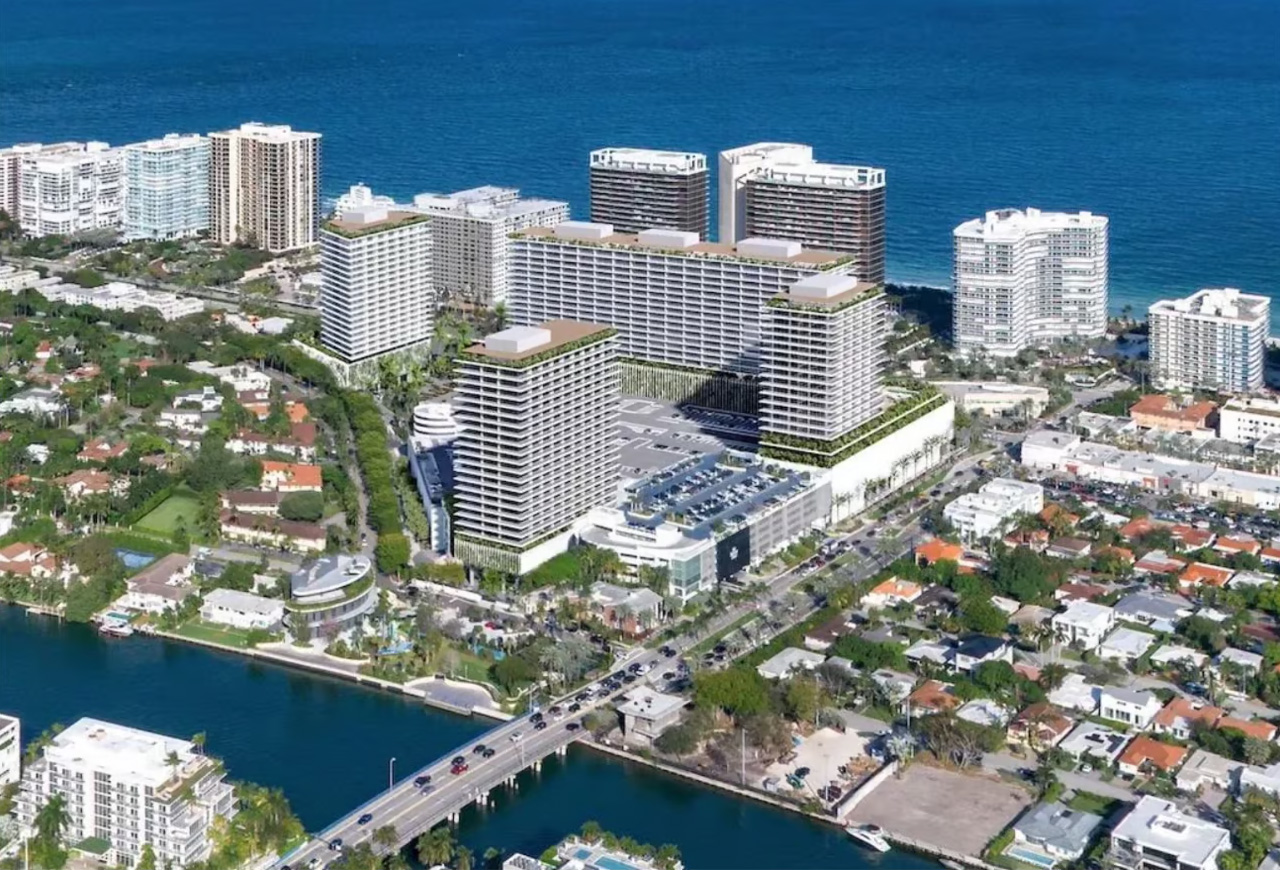
Proposed hotel and apartment development by Bal Harbour Shops
From Boardwalk Hotel…to Apartments to ….?
New York developer Allen Konstam has been buying up low-slung motels along Hollywood’s boardwalk since 2021. And last year, he and his partners were readying plans to build a new luxury hotel and beach club on their site.
Once Florida passed the Live Local Act, they had a different idea.
Konstam’s firm, Condra Property Group, spent over $1 million to redo its development plans. And it proposed instead to build an 18-story condo and workforce rental tower— along a beachside stretch where building heights are capped by local law at five stories.
“What we need is more housing,” Konstam said in an interview. “So we looked into it, and it made financial sense to go that route.”
While not in line with Hollywood’s zoning, an 18-story plan is legal under Florida’s Live Local Act, which allows properties with affordable housing to be built to the same height of any building within one mile. Condra’s site is less than a mile away from the Margaritaville Hollywood Beach Resort, which is an 18-story property, Konstam said.
Having extra height is key to making an affordable housing plan work, he said. Because extra height means he can build more units, and have a larger number of market rate apartments and condos to offset the 40% of units he must lease at below market rates.
He said Hollywood officials rejected Condra’s tower plan— even though it should be legal.
“It looks like were going to be switching back to a hotel,” Konstam said.
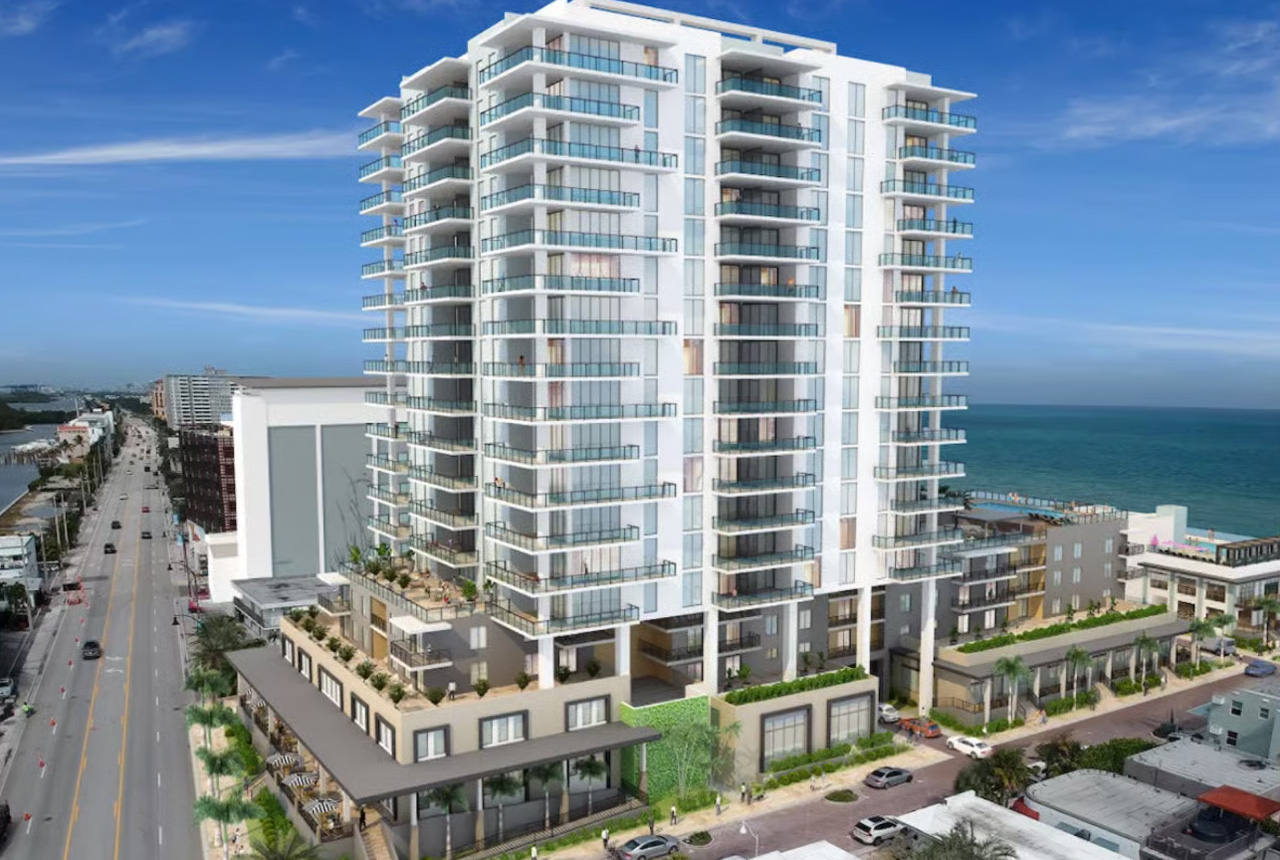
Condra Property Group proposed an 18-story tower in Hollywood
That’s a Wrap?
Florida state lawmakers introduced a pair of bills this month that would scale back the scope of the Live Local Act, and give local officials tighter control over building heights in their towns.
If the changes are approved, affordable housing developers would no longer be able to build as high as the tallest building within a mile. Instead, they’d have to be comparable in height to buildings within one quarter of a mile.
And if their project abuts a building that’s three stories or less, the project’s height will be limited to 125% of the neighbor’s stature — about 5 stories max, says attorney Keith Poliakoff, managing partner of the Government Law Group.
Poliakoff — the attorney who represented Condra in its 18-story Hollywood plan, as well other builders filing affordable projects — said the changes, if approved, would effectively quash any future workforce housing proposals in Florida.
“The legislature got it right the first time,’“ Poliakoff said. “A developer is simply not going to develop workforce housing out of goodness of their heart without an incentive to do so.”
